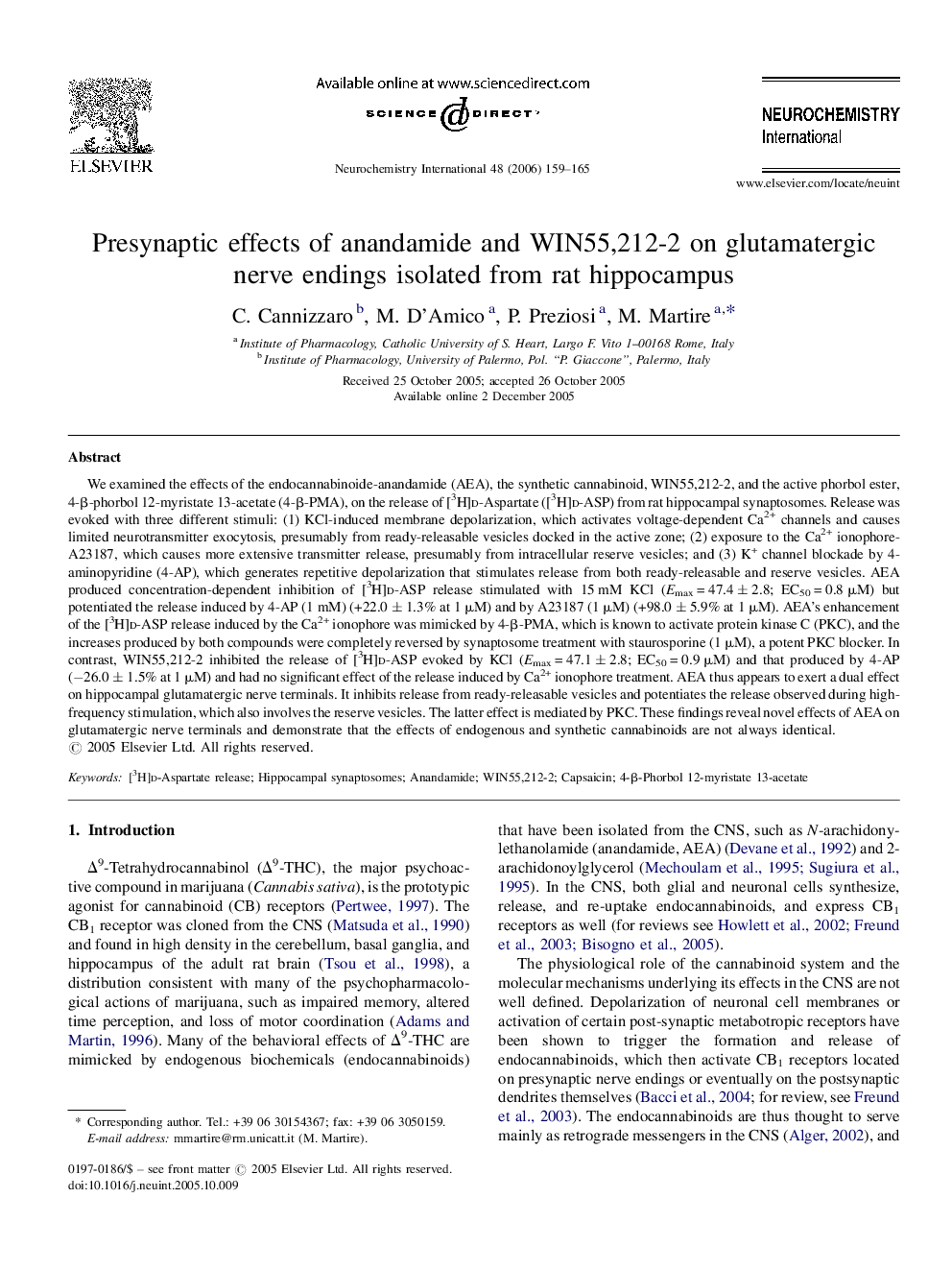| کد مقاله | کد نشریه | سال انتشار | مقاله انگلیسی | نسخه تمام متن |
|---|---|---|---|---|
| 2202102 | 1100060 | 2006 | 7 صفحه PDF | دانلود رایگان |

We examined the effects of the endocannabinoide-anandamide (AEA), the synthetic cannabinoid, WIN55,212-2, and the active phorbol ester, 4-β-phorbol 12-myristate 13-acetate (4-β-PMA), on the release of [3H]d-Aspartate ([3H]d-ASP) from rat hippocampal synaptosomes. Release was evoked with three different stimuli: (1) KCl-induced membrane depolarization, which activates voltage-dependent Ca2+ channels and causes limited neurotransmitter exocytosis, presumably from ready-releasable vesicles docked in the active zone; (2) exposure to the Ca2+ ionophore-A23187, which causes more extensive transmitter release, presumably from intracellular reserve vesicles; and (3) K+ channel blockade by 4-aminopyridine (4-AP), which generates repetitive depolarization that stimulates release from both ready-releasable and reserve vesicles. AEA produced concentration-dependent inhibition of [3H]d-ASP release stimulated with 15 mM KCl (Emax = 47.4 ± 2.8; EC50 = 0.8 μM) but potentiated the release induced by 4-AP (1 mM) (+22.0 ± 1.3% at 1 μM) and by A23187 (1 μM) (+98.0 ± 5.9% at 1 μM). AEA's enhancement of the [3H]d-ASP release induced by the Ca2+ ionophore was mimicked by 4-β-PMA, which is known to activate protein kinase C (PKC), and the increases produced by both compounds were completely reversed by synaptosome treatment with staurosporine (1 μM), a potent PKC blocker. In contrast, WIN55,212-2 inhibited the release of [3H]d-ASP evoked by KCl (Emax = 47.1 ± 2.8; EC50 = 0.9 μM) and that produced by 4-AP (−26.0 ± 1.5% at 1 μM) and had no significant effect of the release induced by Ca2+ ionophore treatment. AEA thus appears to exert a dual effect on hippocampal glutamatergic nerve terminals. It inhibits release from ready-releasable vesicles and potentiates the release observed during high-frequency stimulation, which also involves the reserve vesicles. The latter effect is mediated by PKC. These findings reveal novel effects of AEA on glutamatergic nerve terminals and demonstrate that the effects of endogenous and synthetic cannabinoids are not always identical.
Journal: Neurochemistry International - Volume 48, Issue 3, February 2006, Pages 159–165